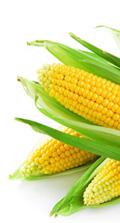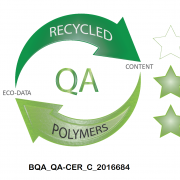With the increasing awareness about sustainable development, many plastic converters are now developing or adding a bio-based range to their product portfolio. The philosophy behind bio-based polymer is to replace the carbon issued from hydrocarbons (fossil oil) by carbon obtained from carbohydrate sources (sugars in plants). In other words, to replenish raw material at a much faster pace (few months vs. few millions of years).
 Due to its versatility, Polylactide (PLA) is the biopolymer that can be found in the broadest range of applications. It can be processed by extrusion, injection molding, film casting and even fiber spinning. Based on renewable resources, PLA is also adding new end-of-life options (such as composting or chemical recycling) which further enhance the Life Cycle Assessment profile of a product.
Due to its versatility, Polylactide (PLA) is the biopolymer that can be found in the broadest range of applications. It can be processed by extrusion, injection molding, film casting and even fiber spinning. Based on renewable resources, PLA is also adding new end-of-life options (such as composting or chemical recycling) which further enhance the Life Cycle Assessment profile of a product.
But as with any new molecule brought on the market, switching to PLA requires a good understanding of the material. The price tag of prime grades may be an obstacle for cost-price sensitive developments.
For such applications not requiring food-contact approval, the use of high-quality recycled PLA (r-PLA) can become an interesting alternative. Being both recycled and bio-based, r-PLA pellets will advantageously - and economically - replace petrochemical-derived polymers in numbers of applications.



Image source: Natureworks LLC


